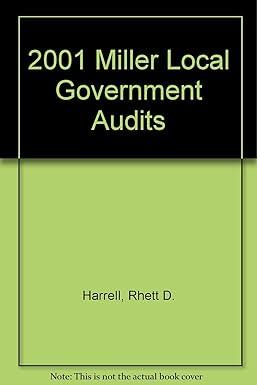Question
Case Study #1 Data: Jonathan, a single man, passed away in December 2018. The value of his assets at the time of death was $16,155,000.
Case Study #1
Data: Jonathan, a single man, passed away in December 2018. The value of his assets at the time of death was $16,155,000. He also owned an insurance policy with a face value of $315,000 (which was not in an irrevocable life insurance trust [ILIT]). The cost of his funeral was $19,750, while estate administrative costs totaled $67,000. As stipulated in his will, he left $154,000 to charities. Also, for each of the years 2011 to 2014, Jonathan provided his niece Suzy with $20,000 per year funding for college tuition. Of this $20,000, $5,000 was paid directly to the college for tuition and fees, $13,000 was paid to his niece to cover her living expenses while she was going to school, and $2,000 was for clothes. In addition to paying for his nieces schooling, he also gave his niece $25,000 as a late graduation present in 2015 for a down payment on a new house.
Calculations: 1. Determine the value of Jonathans gross estate, his taxable estate, his gift-adjusted taxable estate, and his year 2018 estate tax. The annual tax-free gift limit: 2018: 15,000, 2017-2013: $14,000, 2012-2009: 13,000. Use Estate Tax Spreadsheet (LT 40)
a. What is the value of Jonathans gross estate?
2. Determine the value of his taxable estate.
3. Determine his gift-adjusted taxable estate.
4. Determine his estate tax liability for 2018.
(Take your Gift Adjusted Taxable Estate less tax- free amount times estate tax rate).
Step by Step Solution
There are 3 Steps involved in it
Step: 1

Get Instant Access to Expert-Tailored Solutions
See step-by-step solutions with expert insights and AI powered tools for academic success
Step: 2

Step: 3

Ace Your Homework with AI
Get the answers you need in no time with our AI-driven, step-by-step assistance
Get Started


